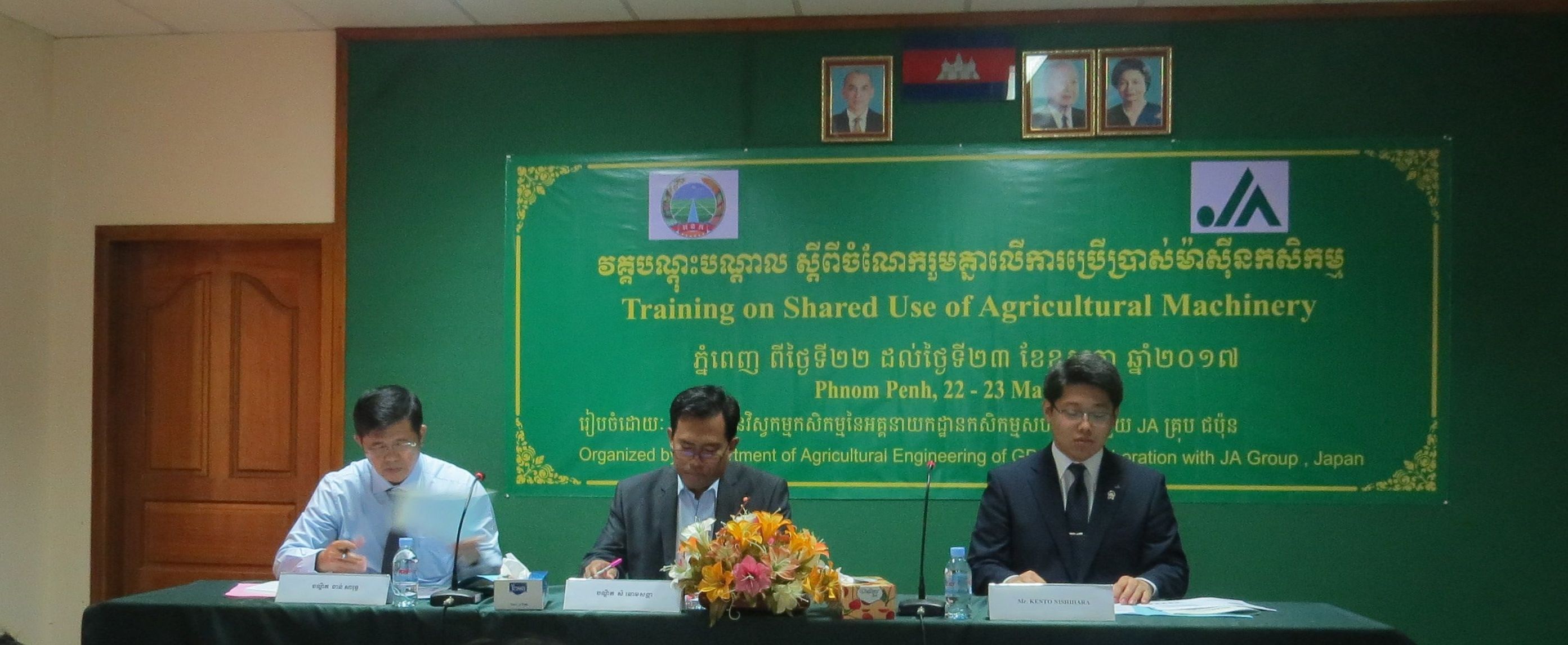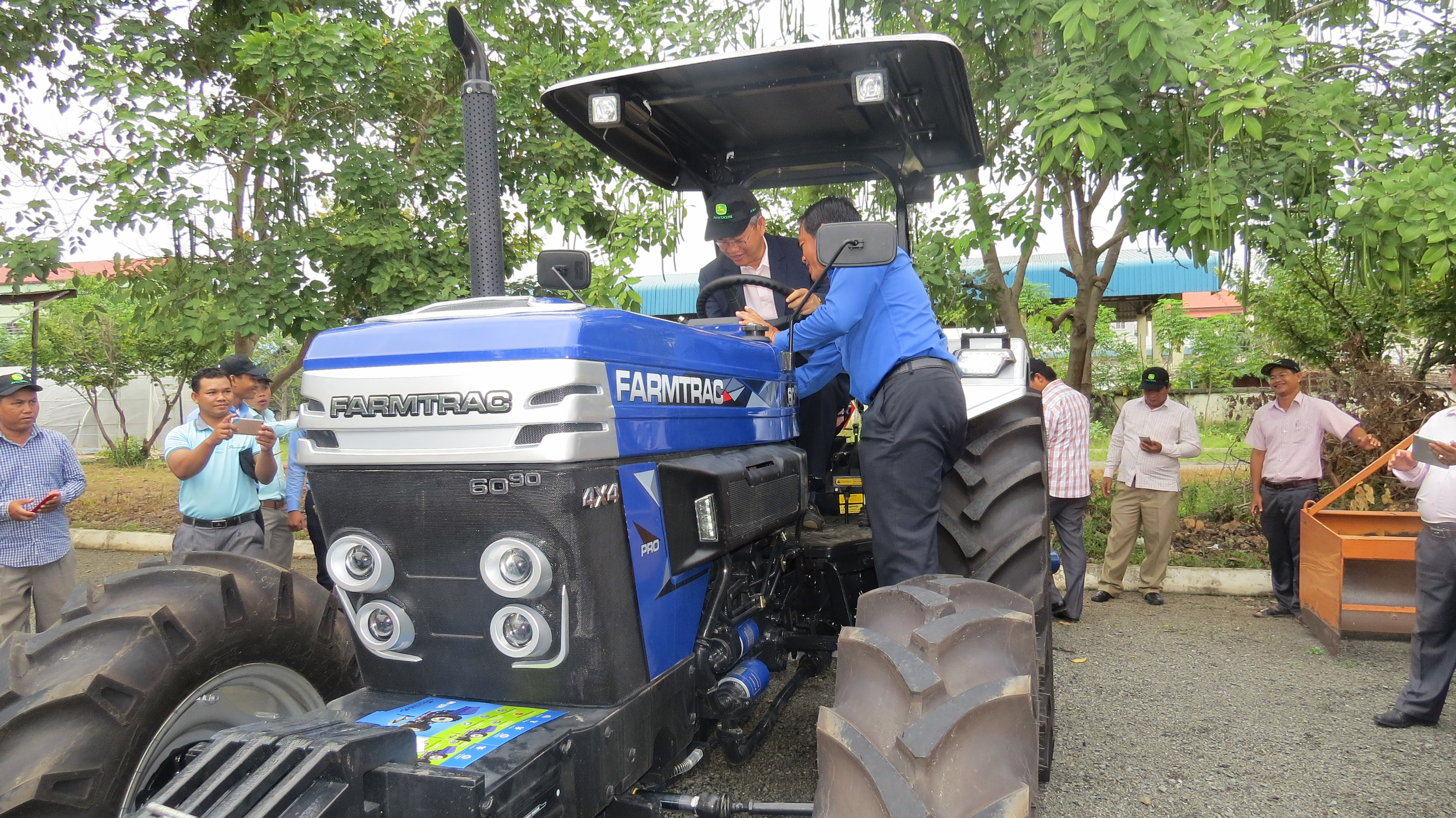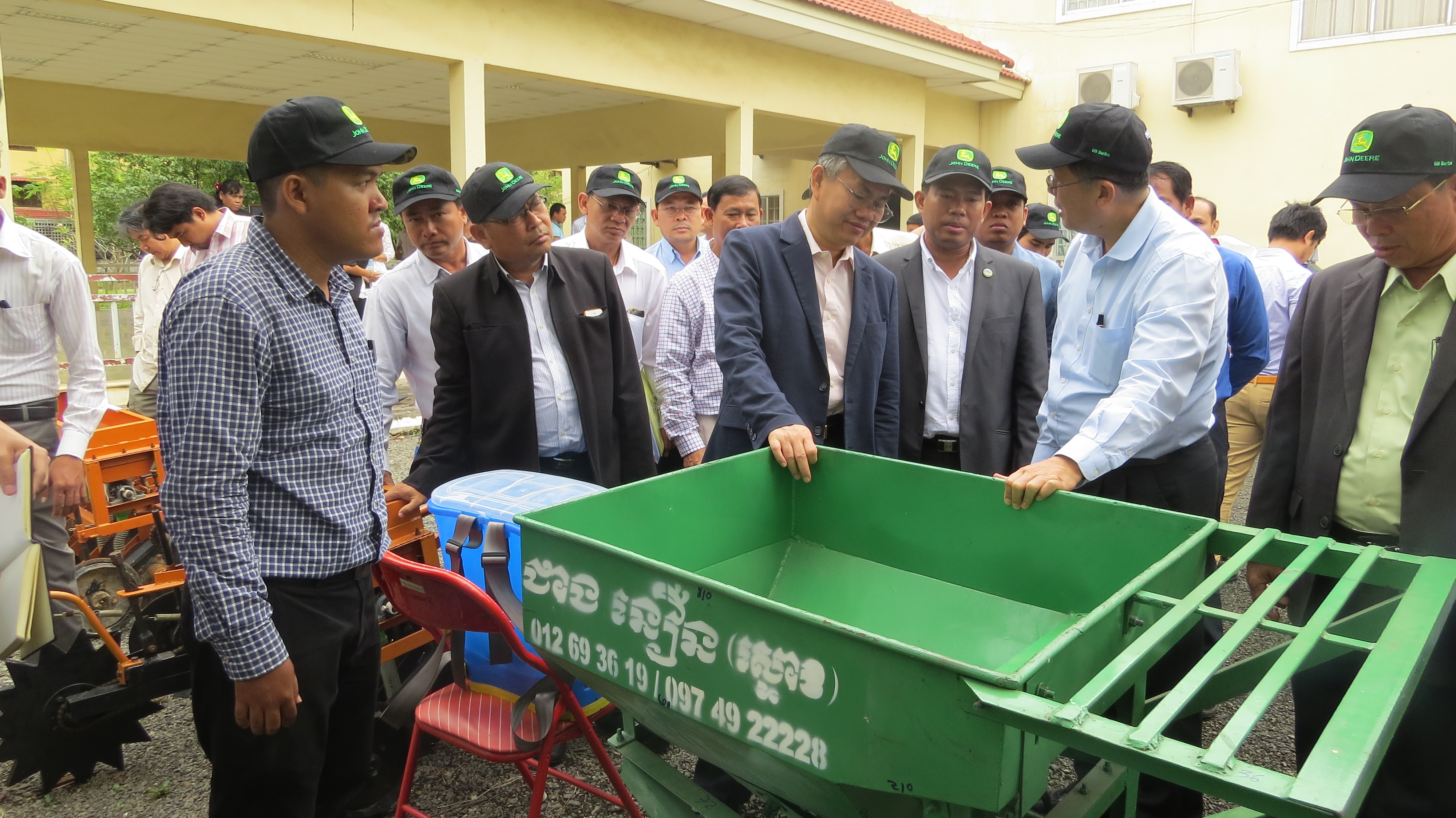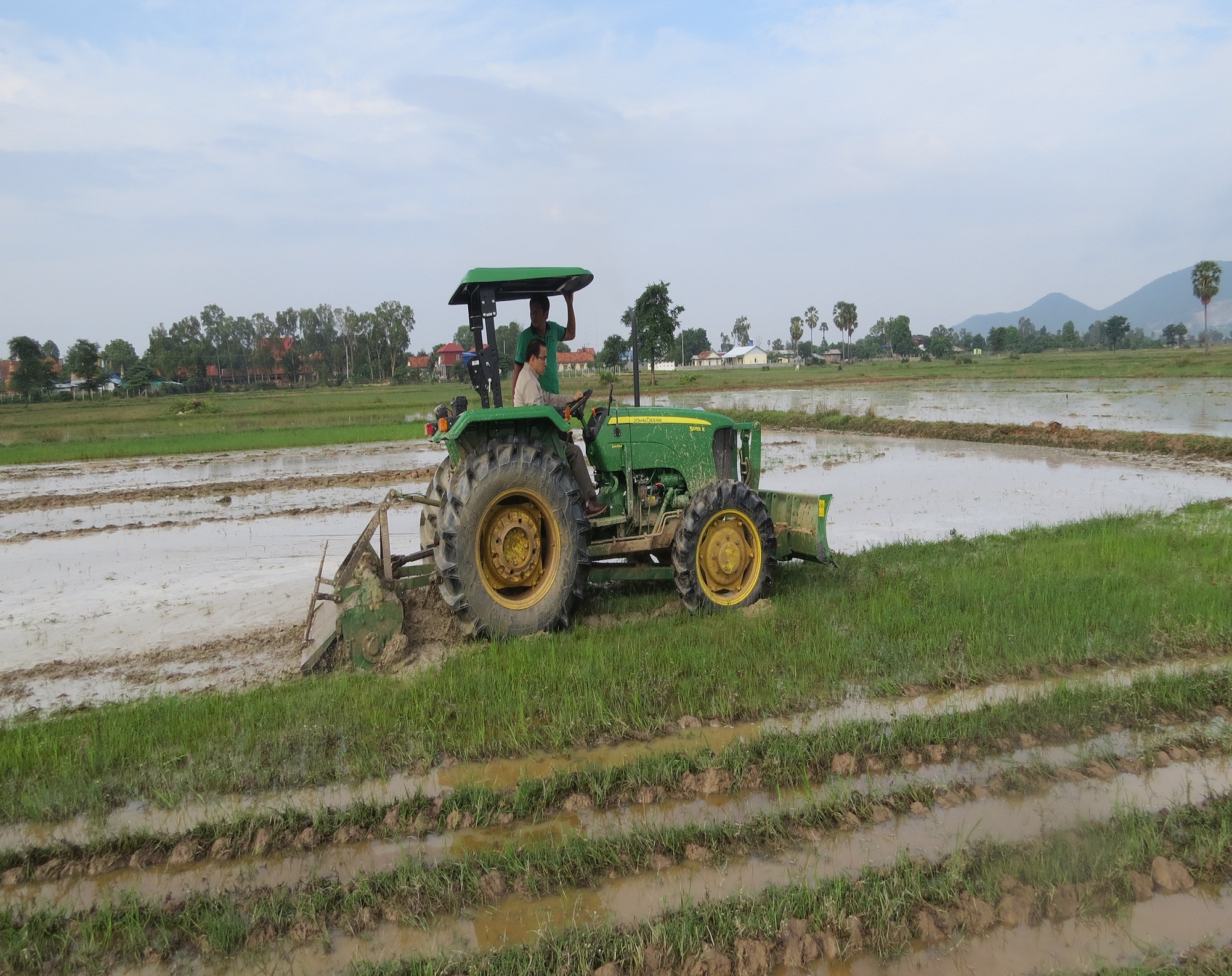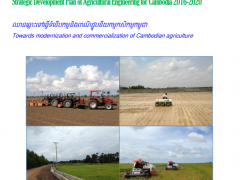The strategic plan for Agricultural Engineering in Cambodia 2016-2020 reflects the development of agricultural engineering sub-sector and the strong commitment of DAEng to ensure food Security and promote sustainable agriculture in Cambodia. It is also a road map in line with the National Rectangular Strategy, National Strategic Development Plan and Agricultural Sector Strategic Development Plan.
Agriculture remains one of the main priority areas of the Royal Government of Cambodia. It contributes about 28.6% to the GDP and employs 60% of total population (MAFF 2015). Agricultural growth had shown steady improvement averaging 5.3% annually during 2004-2012, which was among the highest in the world. However, the growth had slowed down to around 1-2% in 2013-2014 (World Bank 2015).
Cambodian farming systems are largely subsistence oriented and are dependent on rainfed conditions thereby excessively exposing producers to production uncertainties. Most systems are centered on paddy rice production, which is a staple food in the country and 84% of total area is under wet season rice (MAFF 2014). Although new irrigation facilities have been constructed and old schemes have been rehabilitated to allow multiple cropping per year, they have yet met with the demand. This restricts the majority of producers to a single rain-fed rice crop per year.
Improvement of the agricultural sector is paramount in poverty reduction. Commercializing smallholder agriculture and accelerating its growth rate is essential in increasing agricultural production as a means of pulling the majority of the rural poor out of poverty. Given the generally abundant land resource, efforts to increase agricultural production should include both technologies to expand utilized land area and intensification of the existing cultivated area. This may be achieved through mechanization and adoption of other improved technologies such as improved seed, use of fertilizers, agro-processing and accessibility to markets.
The agricultural engineering deals with the design of farm machinery, the location of farm structure, farm drainage, soil management and erosion control, water supply and irrigation, bio-technology and with the efficient planting, harvesting, storage, and processing of farm commodities.
Farm machinery includes three main power sources that is human, animal and mechanical. Under the tropical heat, a health adult using a hand hoe can work about 0.5 ha per season thus limiting the area under cultivation to 2 ha only for an average family of four adults. On the other hand, a family owning a pair of draught animals can manage 5 - 8 ha per season while a 60-70 hp tractor can manage more than 80 ha in a season.
Mechanization enhances the human capacity, leading to intensification and increased productivity as a result of timely planting, weeding, harvesting, post harvesting handling and accessibility to markets. Also it reduces drudgery making agriculture an attractive enterprise. It therefore has the potential to turn idle land into productive land for national economic growth, food self-sufficiency, industrial growth and employment, leading to poverty reduction. Cambodia needs to mount a long-term effort to develop a modern agriculture, mechanization playing a leading role.
Modernization and mechanization in agricultural sector are becoming increasingly important in addressing the shortage of farm power in rural areas. This is because the agricultural labor force is declining as a result of rural-urban and abroad migration, and non-farm employment opportunities. Besides, climate change has put more constraints to complete any specific operation on time to avoid defects and losses. This is hardly done without the help of mechanization.
Strategies formulated in this document envision that by 2020 at least mechanization level 68% of rice field operations from land preparation up to milling will be reached. Enabling profitability of agricultural engineering; skill development and capacity strengthening; improving agricultural productivity and rural livelihoods; and improving policy, legal and regulatory environment will serve as the key drivers in this transformation.
The development of agricultural mechanization in Cambodia shall lie with private sector with the government as a catalyst in sustaining mechanization in the country. It is important to initially assess the performance and profitability of mechanization options in the different ecosystem zones, and make appropriate modifications before farmers and other end-users are advised of the options. The current use of power tillers and tractors are mainly for land preparation. Hence 68% of the mechanization target level shall be achieved by promoting the multiple usability of the two machines equipped with implements for planting, weeding and fertilizer application and other post-harvest operations.
Providing access to credit to farmers who would not otherwise be able to adopt mechanization options is critical in providing the transformation. Here it will be important to help farmers’ cooperatives leverage their collective bargaining power by assisting in establishing business plan, financial integrity and wherever applicable guarantee loans.
Technical skills need to be developed at grass-root levels involving rural artisans, operators, mechanic, service providers, farmers and other end-users. Development of agricultural engineering sector in the country will enable creation of new designs of ergonomic tools for human labor and draught animals, and further widen the choice of mechanization options for local conditions. Mechanization options that help conserve natural resources such as land, soil fertility and water need to be developed and endorsed. Cambodia needs a massive adoption program on mechanization delivering knowledge and awareness amongst farmers through potential entrepreneurs and extension agents of mechanization at village level.
The modernization and commercialization of agriculture requires integration of mechanization options in commodity chains. By enhancing the quality, value and therefore the marketability of farm produces, the introduction of mechanization in commodity chain will substantially improve the profitability of the farmers. Farmers and potential entrepreneurs need to be educated and trained on the various avenues of mechanization in post-harvest handling, storage, and primary-and secondary agro processing enterprises. Linkages along the continuum of production, processing and marketing need to be strengthened through incentives and entrepreneurial spirits. Introduction of mechanization at various stages of processing will not only improve the agricultural commodity chains but also enhance rural employment opportunities and livelihoods in Cambodia.
Favorable policy is the critical for the promotion of agricultural mechanization in the country. All the different policy viz. agricultural, industrial, labor, energy, export/import etc. are needed to be streamlined for promotion of agricultural mechanization. The law, sub-decree and other regulations and guidelines on the promotion of agricultural mechanization will be prepared and adopted. These documents will be served as a road map in the field of mechanization development and be enacted with a view to encouraging and supporting peasants, and agricultural and operation organization to use advanced and applicable agricultural machines, promoting the mechanization of agriculture and developing modern agriculture.
The first regulation needs to be adopted in the near future is the sub-decree on the management of workshops for repair, modification and assembly of agricultural machinery and its associate equipment. The second is legal measures for standardization and certification. Center for Testing of Agricultural Machinery (CTAM) is proposed to establish to undertake machinery testing, quality control and standardization. By ensuring quality and safety, the center will play a very important role in protecting the interests of both farmers and manufacturers.
Link to download Strategic Development Plan of Agricultural Engineering for Cambodia 2016-2020




